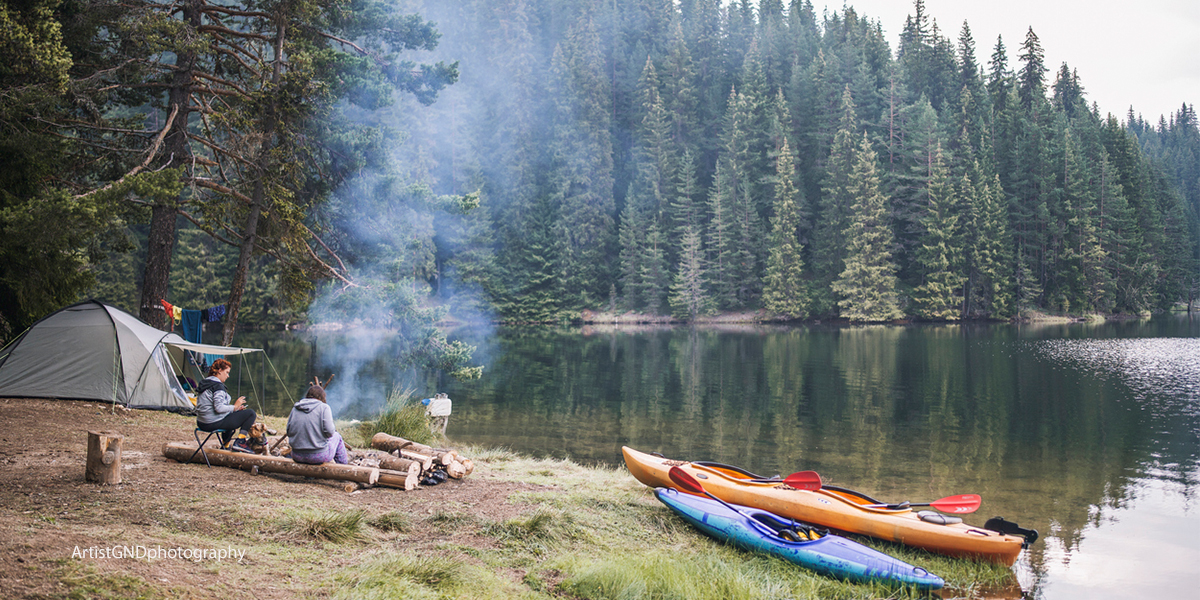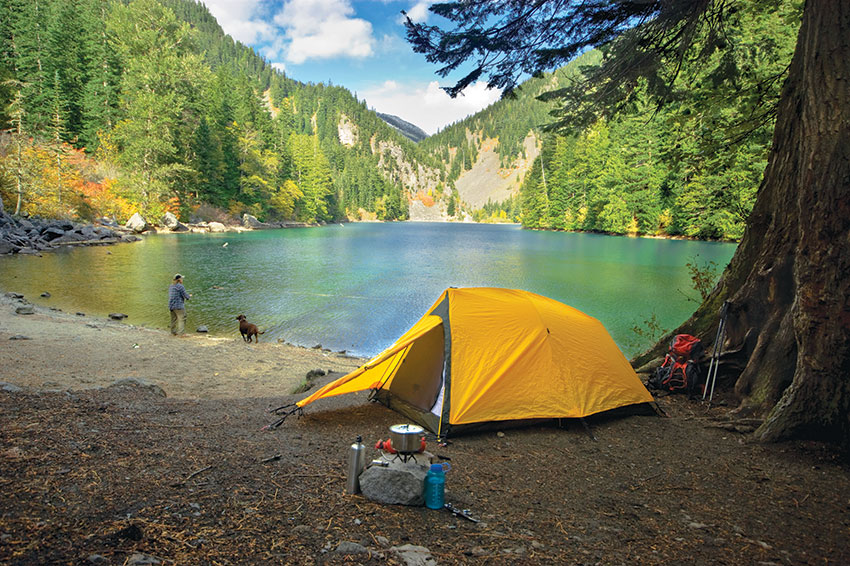Plan your Colorado Camping Trip
With spectacular scenery and mild summer temperatures, there could be no better way to experience the outdoors than camping at one of the many Colorado campsites. Read about some of our campground recommendations.
Colorado’s outdoors has something for every camper’s taste, from the desert of the Colorado National Monument to serene Mountaintop lakes, rushing rivers, and grassy plains. Colorado’s many destinations offer idyllic, untouched wilderness, cool summer weather, and boundless outdoor opportunities. You only need to choose your style.

Explore Campsites
Camping in Colorado doesn’t mean roughing it. There are many ways to enjoy the serene outdoors and pamper yourself with life’s little extras. Whatever your style, there are plenty of opportunities throughout the state.
Places to Camp in Colorado
- Colorado’s State Parks: There are 42 parks throughout the state. Most center around a spectacular mountain lake, while others feature land, trails, and nature. Many feature both. State parks have various amenities such as RV hookups, rental cabins, tent campsites, access to water sports, and more. Each park is unique, so you need to check out the State Parks Guide for more information.
- National Forests and Grasslands: there are 11 National Forests (13,234,380 acres) and 2 National Grasslands in Colorado, The Pawnee (193,060 acres), east of Fort Collins, and the Comanche National Grassland in the SE corner of the state. Dispersed camping is allowed (not to exceed 14 days) in the National Forests and Grasslands; however, some exceptions exist (no dispersed camping) in high-traffic areas such as trailheads, campgrounds, and picnic sites. Campgrounds on National lands do require reservations. Please beware of dispersed camping regulations before you head out.
- BLM Lands: Dispersed camping is allowed on Colorado’s BLM Lands (8.3 million acres); the same rules apply. BLM campgrounds require a fee, and reservations can be made at recreation.gov.
- Wilderness: Colorado has 44 federally protected wilderness areas with over 3.5 million acres. Camping in wilderness areas usually requires a permit or signing in at the trailhead. Visitors must follow wilderness regulations and any signage along the route. Wilderness areas are generally surrounded by the National Forest.
- Private Campgrounds: private campgrounds are found throughout the state and often offer the best-case scenario for RV hookups and other amenities.
Choose Your Camping Style
Now that you understand Colorado’s different places to camp, you can choose how you will camp. Recreational Vehicle (RV) and Cabin camping will be the most comfortable. You can bring whatever you want, and you will have access to bathrooms, kitchens, beds, and other amenities. Car camping or backpacking on public lands outside a designated campground is a rougher experience; however, this is the way to go for those who want to experience nature’s solitude and beauty.
Recreational Vehicle (RV) Camping
A very popular way of experiencing Colorado is by RV. The freedom of traveling by RV gives you access to any destination the road will take you. Experience high mountain vistas and travel through quaint mountain towns. Stop at local farmer’s markets and musical events. Find out-of-the-way campsites. Learn more about RV camping in Colorado. Most campsites that facilitate RV campers do require reservations. However, BLM is always open to RVs, and some National Forest locations are available too.
Rent a Rustic Cabin
Finding a tucked-away cabin in Colorado is a very popular way to experience the effervescence of Colorado. Cabins in Colorado are usually surrounded by majestic mountains next to a lake or a hot springs, in a state park, or on a private guest ranch. Renting a cabin is a great way to experience the wonders of that particular place. That said, there are often several Colorado activities to choose from within your location, plus the cabin’s roominess to keep all your stuff safe and ready.
Pitching a Tent
Camping by way of a tent. If you are serious about getting remote, pitching a tent is the way to go. Even if you choose to car camp with a tent, your options of finding campsites without a reservation go way up. If you find your favorite campground full, look for a nearby National Forest. Although there are National Forest campgrounds, you don’t have to camp in a designated area. The National Forest is open to the public, but please be mindful of packing out whatever you bring in and read through these rules for forest visitors.
Backpacking
Going backpacking is the best way to experience Colorado’s wilderness. Backpacking allows trekkers to get close to all the beauty and wonders of Colorado’s remote areas. Colorado has some of the most scenic and challenging trails in North America. However, backpacking in Colorado is really for the seasoned enthusiast. To begin with, you need to be hiking-fit and able to carry a heavy backpack. If you are a total newbie, find someone experienced to accompany you. Backpacking is the opposite of RV camping, as all your essentials need to be scaled down to a minuscule size or completely left behind. It’s best to do a couple of overnight trips before heading out for several days. This will help you understand your equipment and how to organize for a longer trip. You need to be comfortable with maps and a compass as well. Spend time hiking with a map so you get a feel for navigation. That being said, backpacking is the most exhilarating and refreshing way to experience the wilderness.
Dispersed Camping
Dispersed camping refers to finding campsites outside of designated campgrounds; however, there are rules to follow. Tent camping or Backpacking through public lands such as the National Forest, BLM, or wilderness is considered dispersed camping. However, the wilderness has additional regulations.
Bring Along the Essentials
Colorado temperatures fluctuate dramatically from day to night, and wildlife is plentiful. Always remember to be smart about food storage and be prepared with essentials like sunscreen, maps, first aid kits, proper clothing, drinking water, or a water filtration system.
For information on forest service campgrounds, including location, availability, reservations, and services, visit the National Forest website at www.fs.usda.gov or www.recreation.gov. Consider a Colorado State Park for your next trip.

